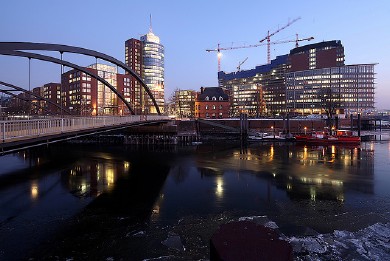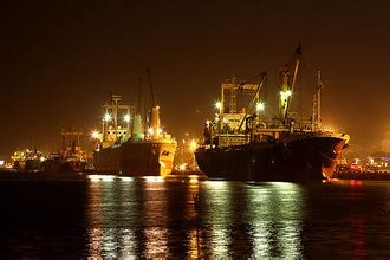Import Containers
There are two types of containers viz. full container load (FCL) and less than full container load (LCL).
A LCL container is a container with goods for more than one consignee or with goods from more than one consignor, whereas an FCL is a container with goods for one consignee or with goods from one consignor.
FCL containers are normally not unstuffed in the FTZ. They are sealed by the ICA officers at the FTZ Out-Gates or examined/released without being sealed. Sealed containers should only be unstuffed under Singapore Customs' supervision. Unsealed containers, however, may be unstuffed at any time without Customs' supervision.
LCL containers are unstuffed in the FTZ and cleared through the FTZ Out-Gates as conventional cargoes. No Customs supervision is required for the unstuffing of such containers in the FTZ.
For cargo entering Customs territory as containerised cargo, the trader must declare the container number in his import declaration.
Prior to the removal of containers out of the FTZ, the trader should obtain the relevant Customs permits. The approved Customs permits and supporting commercial documents however need not be produced at the time of clearance of the containers.
Containers requiring Customs examination will be sealed at the respective FTZ Out-gates. After the sealed containers have been trucked out of the FTZ, consignees or their transport agents should make arrangements with Singapore Customs for supervision of unstuffing of the containers.
Customs seals placed on containers at the time of import should not be broken without the supervision or written permission of Singapore Customs.
Containers not requiring Customs examination will be given SNR (i.e. Sealing Not Required) facilitation and released by ICA officers without being sealed. Unsealed containers may be unstuffed at any time without Singapore Customs supervision.
Transhipment Containers
The trader must obtain a Customs permit for inter-gateway movement of containerised cargo. Upon approval of the permit, the container should be produced at the first (i.e. entry) and second (i.e. exit) checkpoint for clearance. The Customs permit need not accompany the container at the time of clearance.
At the first checkpoint, the container would be affixed with a Customs seal. The sealed container must be produced at the second checkpoint for clearance within 24 hours after its release from the first checkpoint. Appropriate action will be taken against the declarant of the Customs permits should ICA officer at the second checkpoint find that the Customs seal affixed at the first checkpoint has been tampered with.
There are, however, some circumstances when no Customs permit is required for transhipment of goods. Please click here for more information.
Export Containers
Prior to movement of dutiable or controlled goods for export, the trader will have to obtain a Customs Permit from Customs or the Controlling Authority. Upon approval of the permit, the container will have to be produced to ICA officer at the checkpoint for clearance. However, the Customs Permit need not accompany the container at the time of clearance. For goods released from licensed or Zero GST warehouses, the container should be produced together with the Release Notes at the FTZ In-Gate for clearance.
Dangerous Cargoes in Containers
The Maritime and Port Authority requires immediate removal of containers carrying dangerous cargoes when such containers are discharged from the vessel direct into a FTZ. If handling agents are not in possession of the relevant documents for the applications for Customs permits, they should obtain blanket Customs Inward Permits for movement of the LCL containers for storage in any of the approved Class II bonded warehouse in Customs territory, pending break bulking. For movement of FCL container containing dangerous cargoes, a Customs Permit has to be taken out for movement of the container directly to the trader's premises if the goods are for local delivery, or a Joint Customs/IESP Pink Transhipment permit is to be obtained for storage in any of the approved Class II bonded warehouse in Customs territory, pending transhipment.
Upon approval of the permits, the containers should be produced at the FTZ Out Gates for sealing by ICA officer. However, the Customs Permit need not accompany the container at the time of clearance.








